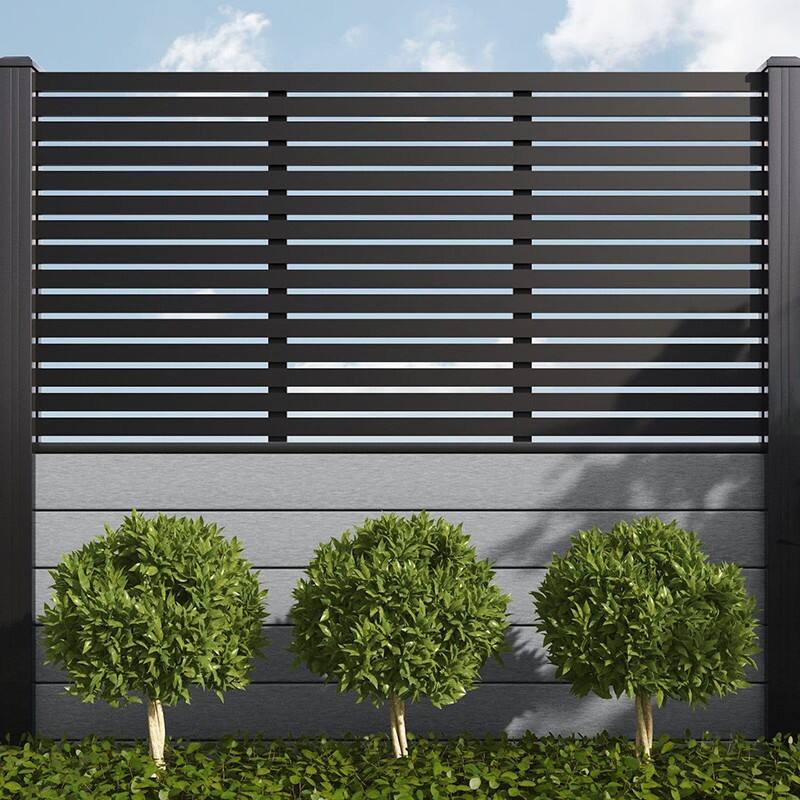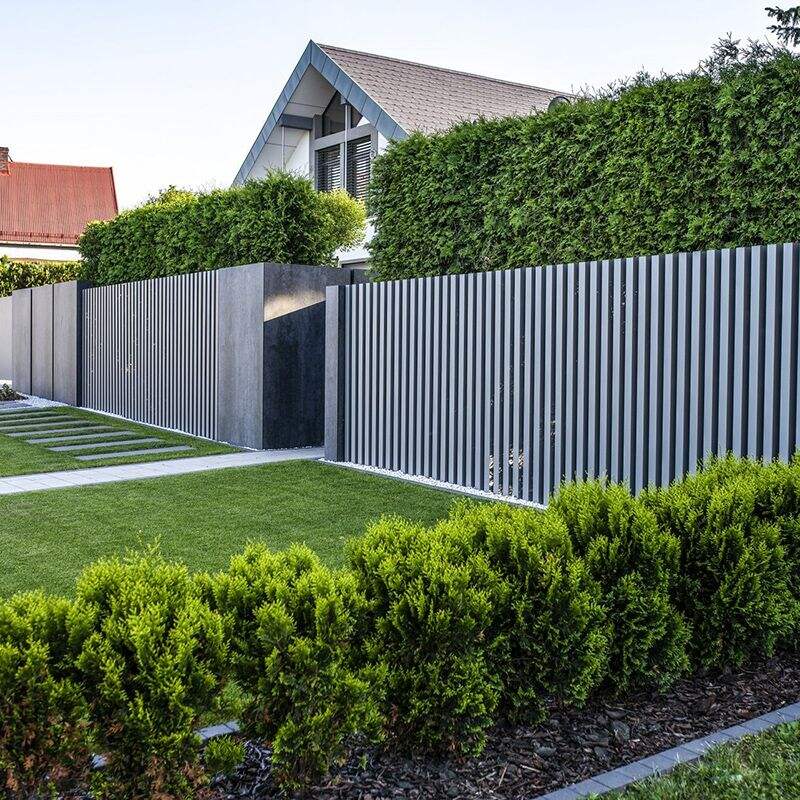23rd Floor, Building B03, ushang Center, 50 Meters East 0f The lintersection 0f Guangzhou Road And Xiaohe Road, Linyi, shandong, China +86-15020919237 [email protected]
23rd Floor, Building B03, ushang Center, 50 Meters East 0f The lintersection 0f Guangzhou Road And Xiaohe Road, Linyi, shandong, China +86-15020919237 [email protected]
In the realm of outdoor landscaping and property enhancement, the choice of fencing material plays a pivotal role in balancing functionality, durability, and aesthetic appeal. As homeowners and designers increasingly seek sustainable and versatile solutions, WPC (Wood-Plastic Composite) fences have emerged as a leading choice, combining the best of natural wood aesthetics with the resilience of modern composite materials. This article delves into the technical specifications, practical advantages, and design possibilities of WPC fences, providing valuable insights for those seeking to transform their outdoor spaces.
Traditional fencing materials such as wooden planks, wrought iron, and vinyl have long dominated the market, each with its unique set of advantages and limitations. Wooden fences, while aesthetically pleasing, are prone to rot, warping, and insect damage, requiring frequent maintenance. Iron fences offer durability but lack the warmth of natural materials and can be susceptible to rust. Vinyl fences, though low-maintenance, often fail to replicate the authentic look of wood and may crack under extreme weather conditions.
The advent of WPC materials has revolutionized the fencing industry, offering a sustainable alternative that addresses the shortcomings of traditional materials. WPC fences are crafted from a blend of wood fibers, plastic resins, and additives, creating a composite that combines the visual appeal of wood with the durability of plastic. This innovative material has gained traction in outdoor design due to its eco-friendly composition, minimal maintenance requirements, and exceptional resistance to environmental factors.
Shandong Witop Decoration Materials Co., Ltd., with over 20 self-owned and cooperative factories, has been at the forefront of this revolution, producing WPC fences that meet international standards of quality and performance. The company's commitment to innovation and sustainability has made it a trusted supplier of building materials for both residential and commercial projects worldwide.

WPC fences are typically composed of 50-70% wood fibers (such as sawdust or wood flour), 20-40% plastic resins (often HDPE or PVC), and 5-10% additives including stabilizers, colorants, and lubricants. This precise composition ensures a balance between strength, flexibility, and aesthetic appeal. The wood fibers provide the natural texture and visual appeal, while the plastic matrix enhances water resistance and durability.
The production of WPC fences involves several key steps:
One of the most significant advantages of WPC fences is their exceptional durability in various climatic conditions. Unlike wooden fences, which can rot or warp when exposed to moisture, WPC fences are highly resistant to water damage, making them ideal for areas with high humidity or frequent rainfall. The plastic component of the composite acts as a barrier against moisture penetration, preventing the growth of mold and mildew.

WPC fences also exhibit remarkable resistance to UV radiation, which can cause traditional wooden fences to fade and deteriorate over time. Shandong Witop's WPC fences are formulated with UV stabilizers that protect the material from sun damage, ensuring that the color and finish remain vibrant for years to come. This resistance to weathering makes WPC fences a reliable choice for both coastal regions, where saltwater exposure can accelerate material degradation, and arid climates, where extreme temperature fluctuations can cause cracking.
Unlike traditional wooden fences, which require regular staining, painting, or sealing to maintain their appearance, WPC fences are virtually maintenance-free. The composite material does not splinter, crack, or rot, eliminating the need for periodic repairs or replacements. A simple cleaning with soap and water is usually sufficient to keep WPC fences looking new, saving homeowners both time and money in the long run.
WPC fences offer a wide range of aesthetic possibilities, allowing homeowners and designers to create outdoor spaces that reflect their personal style. Shandong Witop's WPC fences are available in a variety of colors, textures, and profiles, mimicking the look of natural wood species such as oak, cedar, and mahogany, while also offering contemporary solid colors for modern designs.
The company's advanced surface treatment technologies, including embossing and 3D printing, enable the creation of realistic wood grain patterns and unique textures that enhance the visual appeal of WPC fences. Additionally, WPC fences can be customized to fit specific design requirements, such as curved profiles for decorative elements or unique lattice patterns for added visual interest.
In an era of increasing environmental consciousness, WPC fences stand out as a sustainable fencing solution. Shandong Witop's WPC fences are made from a combination of recycled wood fibers and plastic materials, reducing the demand for virgin resources. The production process also generates less waste and consumes less energy compared to traditional fencing materials, contributing to a lower carbon footprint.
Furthermore, WPC fences are fully recyclable at the end of their lifespan, allowing them to be repurposed into new composite products. This closed-loop lifecycle makes WPC fences an environmentally responsible choice for eco-conscious homeowners and commercial projects.
While the initial cost of WPC fences may be slightly higher than traditional wooden fences, the long-term cost savings are significant. The minimal maintenance requirements, exceptional durability, and resistance to weathering mean that WPC fences offer a higher return on investment over their lifespan. Shandong Witop's competitive pricing and commitment to quality ensure that customers receive a premium product at a reasonable cost, making WPC fences an affordable option for a wide range of budgets.
WPC fences are an excellent choice for residential properties, offering both security and aesthetic appeal. They can be used to define property boundaries, create private outdoor spaces, or enhance the curb appeal of a home.
For homeowners looking to create a cohesive outdoor design, WPC fences can be paired with other WPC products such as decking, siding, and garden furniture, creating a unified look that enhances the overall aesthetic of the property. The company's range of color options allows for seamless integration with existing architecture and landscaping elements.
WPC fences are also well-suited for commercial and municipal applications, where durability and low maintenance are paramount. They can be used in office parks, retail centers, schools, and public parks to create safe and attractive environments. Shandong Witop's WPC fences are designed to withstand heavy use and frequent exposure to the elements, making them a reliable choice for high-traffic areas.
In municipal projects, WPC fences can be used for sound barriers, security fencing, or decorative elements in urban landscaping. The material's resistance to graffiti and ease of cleaning makes it an ideal choice for public spaces, reducing the need for frequent maintenance and repairs.
WPC fences are particularly well-suited for pool and patio areas, where traditional wooden fences can be susceptible to water damage and rot. The water-resistant properties of WPC make it an excellent choice for these wet environments, while its slip-resistant surface ensures safety around pools.
WPC fences can be used creatively in garden and landscape design to create unique features such as garden borders, trellises, and privacy screens. The material's flexibility allows for the creation of curved fences and intricate designs that add the visual appeal to any garden.

While WPC fences are designed for easy installation, professional installation is recommended for optimal results, especially for large or complex projects. Shandong Witop offers comprehensive installation guidance and support to ensure that its WPC fences are installed correctly, maximizing their performance and lifespan.
For DIY enthusiasts, the company provides detailed installation manuals and online resources to help homeowners tackle smaller projects. WPC fences are lighter than traditional wooden fences, making them easier to handle and install, and their modular design allows for quick and straightforward assembly.
Maintaining WPC fences is simple and straightforward:
WPC fences represent the future of outdoor fencing, combining durability, aesthetic appeal, and sustainability in a single innovative material. Shandong Witop Decoration Materials Co., Ltd.'s commitment to quality, innovation, and customer satisfaction has made it a leading provider of WPC fencing solutions worldwide.
Whether you're looking to enhance the curb appeal of your home, create a secure and attractive commercial space, or design a stunning outdoor landscape, WPC fences offer a versatile and reliable solution. With their exceptional durability, low maintenance requirements, and endless design possibilities, WPC fences from Shandong Witop are the perfect choice for transforming any outdoor space into a beautiful and functional retreat.
To learn more about Shandong Witop's WPC fences and how they can enhance your next project, visit https://www.witopwpc.cn/ or contact the company's expert team today. Experience the difference that high-quality WPC fencing can make in creating durable and aesthetic outdoor spaces that stand the test of time.